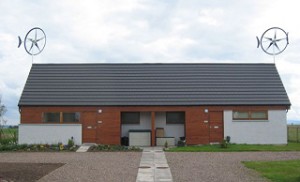From Guest Blogger Simon Stevens: What You Should Think About When Installing Solar Panels

There’s two main things to think about:
- The roof which you decide to install them on should ideally be facing south-east or south-west, avoid any shading
- Ensuring that the inverter (which is used to convert the current generated to alternating current, which is used for appliances) is close to the panels to reduce transmission loss.
The placement/angle
When considering solar panels, you need to ensure that the placement of them is correct so the efficiency is at its best. South facing panels are the most efficient, but they will still generate energy in other directions, just not as much. However, you need to analyse and see whether your house is suitable, as north facing panels should be avoided.
The angle at which they are placed is equally as important as the placement. UK roofs normally provide the perfect angle at around 32°. This angle not only provides the solar panels with great efficiency, it also allows them to clean themselves as rain will wash away the dust. If you are unable to hit the perfect angle, the minimum the angle can be is at 15°. If the panels are facing either west or east, a shallower tilt angle is recommended as the sun is lower in the sky as it moves away from the south. If you happen to have a flat roof, it is possible to get mounts to allow for the panels to be at the correct angle.
If you have a bit more money to play with then it is possible to get tracking solar panels, which automatically adjust and follow the sun to ensure that you receive the maximum efficiency. However, in harsher conditions, they do not perform as well as their mounted counterparts.
Shadowing
Shadows can have a huge implication on the performance of solar panels, even if they’re slightly shaded by a tree or building, their efficiency will decrease. This is due to solar panels being connected through ‘strings’ – if one cell happens to get blocked, it affects the overall performance of the whole panel. If you are guaranteed that shading will occur, it’s possible to arrange your panels so that one whole string is affected rather than multiple strings affecting multiple panels.
Inverter
Solar panels produce electricity that comes in the form of a direct current (DC), which needs to be converted into alternating current (AC) before it’s possible to use it in your home. All solar systems include an inverter which converts the electricity from DC to AC. But, the closer the inverter is to the solar panels, the more efficient it becomes at converting the electricity, so most homeowners choose to place the inverter in their loft.
Optional extras to increase efficiency
Solar PV diverter
By installing a diverter, it gives you the opportunity to increase the amount of self-energy you’ve generated to power your household. If you choose to not have one, the electricity you generate is sent straight to the national grid, and you will have to pay the same as everyone else for importing electricity when the sun isn’t shining. Installing one of these means that your excess electricity is sent to your immersion heater, meaning that you’re saving money on heating your water.
Solar PV battery storage
If you happen to have a bit more money to spend, this option could be perfect for you. Instead of sending your generated electricity to the grid, it allows you to store it and use it whenever you want. Meaning that you will be affected less by energy companies and cut your bills even further.
